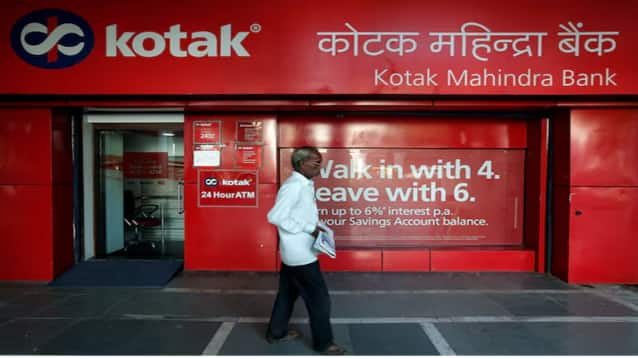The bank’s unsecured retail advances, including retail microcredit, as a percentage of net advances stood at 9.7 per cent as of June 2025, vis-a-vis 11.6 per cent as of June 2024.

The segment now accounts for just 1.3 per cent of Kotak Mahindra Bank’s total net advances at Rs 4.44 lakh crore as of Q1 FY26. (Source: reuters)
Kotak Mahindra Bank expects credit costs in microfinance to remain at elevated levels for the next two quarters, even as its microfinance business has been profitable. The lender had flagged rising credit strains in the microfinance industry last year and has since pared its retail microfinance book. As of June quarter in the current fiscal, the bank’s retail microcredit had dropped by 43 per cent to Rs 5,882 crore from Rs 10,368 crore during the same period.
“The microfinance industry has seen significant credit strains, something we had highlighted in Q1 of Fiscal Year ‘25. Having said that, we expect credit cost to stay at this elevated level for the next two quarters,” Shekhar Bhandari, President – SME, Kotak Mahindra Bank told FE BFSI.
The segment now accounts for just 1.3 per cent of Kotak Mahindra Bank’s total net advances at Rs 4.44 lakh crore as of Q1 FY26.
“Despite the stress, the microfinance business remained profitable on a full-year basis,” Bhandari said. He added that Kotak Mahindra Bank will assess whether the current challenges are cyclical or structural, and may recalibrate its business model to manage risks in the segment.
The bank’s unsecured retail advances, including retail microcredit, as a percentage of net advances stood at 9.7 per cent as of June 2025, vis-a-vis 11.6 per cent as of June 2024.
Overall, the microfinance sector in India is currently facing an extended road to recovery. According to a Crisil report in July this year, normalisation of profitability for microfinance institutions (MFIs) is expected only by end of the current fiscal. While the transition to the Guardrails 2.0 regime, with effect from April 1, 2025, has limited the exposure of MFIs to over-leveraged borrowers, slippages from the legacy portfolio will keep asset quality under pressure.
Also read: NPAs of PSBs Fall to Four-Year Low; SBI, Union Bank, PNB Lead in Total Write-offs
As per Crisil estimates, almost a fourth of the portfolio with more than three lenders is in the PAR (portfolio at risk) 31-180 days bucket as on June 30, 2025.
As of March 2025, microfinance gross loan portfolio (GLP) was Rs 3.81 lakh crore, marking a 7 per cent year-on-year decline, as per the sectoral outlook report by Infomerics Valuation and Rating. This contraction reflects growing repayment challenges, a cautious lending environment, and regional distress pockets.
Moreover, asset quality has deteriorated sharply with NPAs growing to 16 per cent from 8.8 per cent during the previous year, driven by over-borrowing, economic disruptions, and stressed geographies.
By continuing you agree to our Privacy Policy & Terms & Conditions
